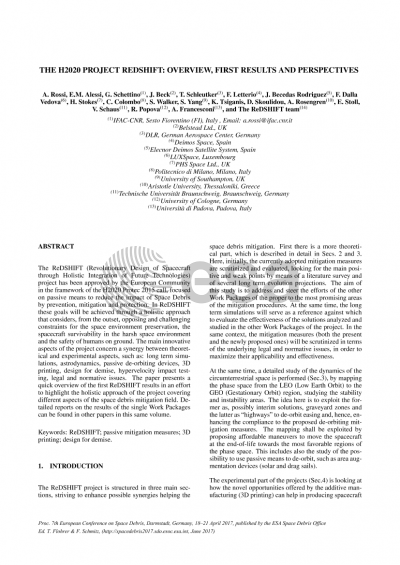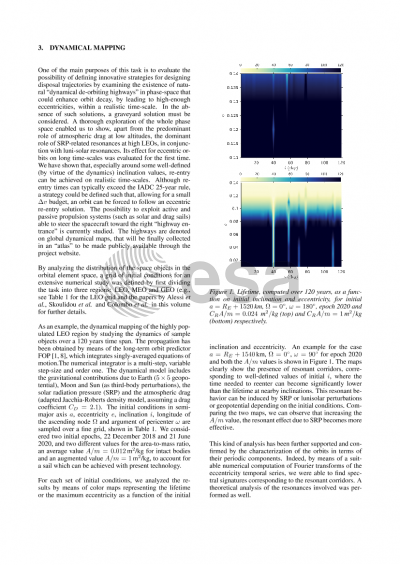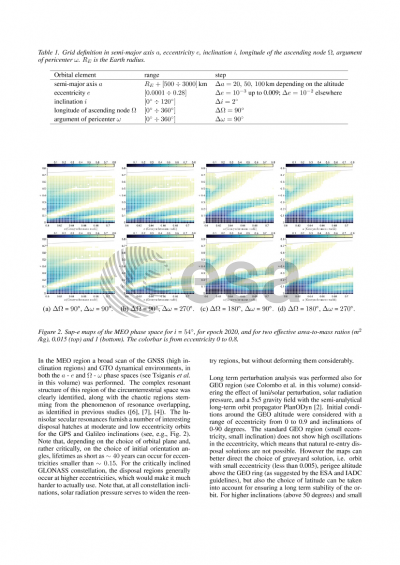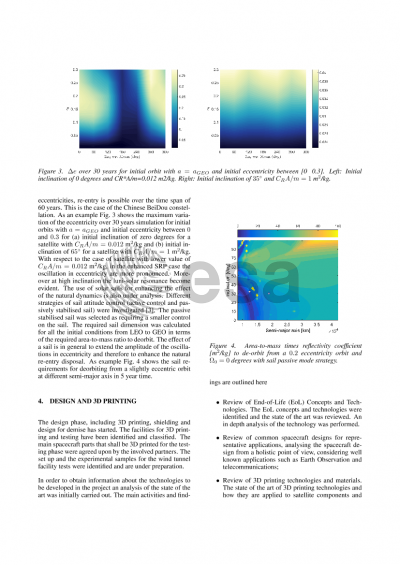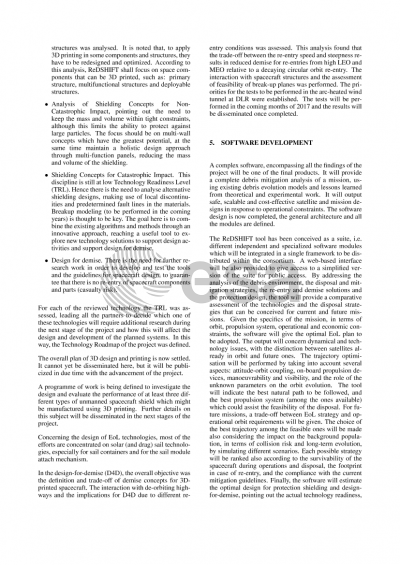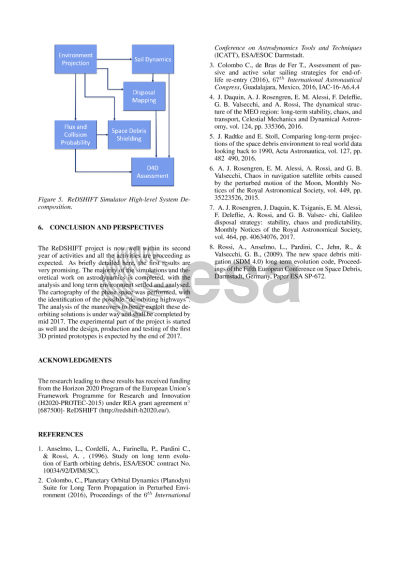Document details

Abstract
The ReDSHIFT (Revolutionary Design of Spacecraft through Holistic Integration of Future Technologies) project has been approved by the European Community in the framework of the H2020 Protec 2015 call, focused on passive means to reduce the impact of Space Debris by prevention, mitigation and protection.
In ReDSHIFT these goals will be achieved through a holistic approach that considers, from the outset, opposing and challenging constraints for the space environment preservation, the spacecraft survivability in the harsh space environment and the safety of humans on ground.
First, a general overview of the project will be given, highlighting
the main innovative aspects of the project and their interconnections:
long term simulations, astrodynamics, passive de-orbiting devices,
3D printing, design for demise, hypervelocity impact testing, legal and
normative issues.
Then an overview of the first results of the project will be given.
Detailed reports on the results of the single Work Packages will be given in separate, dedicated talks. Here we summarize the main results, in an effort to highlight the holistic approach of the project covering different aspects of the space debris mitigation field.
In particular, at this stage of the project, it is worth mentioning:
- A critical analysis of the strength and weaknesses of the currently adopted mitigation measures was performed. To assess and quantify their effectiveness and to set a reference for further analysis in the second phase of the project, specific long term debris environment simulations were performed with LUCA and SDM.
- The dynamical mapping of the LEO to GEO space is concluded. Stable and unstable regions (under all the relevant orbital perturbations) were identified in a fine grid of the phase space. Building on the map, the "de-orbiting highways", i.e., fast trajectories to de-orbit, along with the required maneuvers (where applicable) are suggested for all the different orbital regions. The possible use of synergies with drag and solar radiation pressure augmentation devices are being explored.
- The design phase, including 3D printing, shielding and design for demise has started. The facilities for 3D printing and testing have been identified and classified. The main spacecraft parts that shall be 3D printed for the testing phase were agreed upon by the involved partners. The set up and the experimental samples for the wind tunnel facility tests were identified and are under preparation.
- A complex software, encompassing all the findings of the project will be one of the final products. It will provide a complete debris mitigation analysis of a mission, using existing debris evolution models and lessons learned from theoretical and experimental work. It will output safe, scalable and cost-effective satellite and mission designs in response to operational constraints. The software design is now completed, the general architecture and all the modules are defined.
All the above points, along with their interrelations will be described in the paper.
ReDSHIFT is now entering its second year of work. In the coming months the main efforts will be devoted to the design, 3D printing
and testing aspects. Further work on the astrodynamics, mainly on area augmentation devices and manifold dynamics are in line too.
All these activities are in an advanced phase of planning and an overview of the way forward will be given in the final part of the talk.
The research leading to these results has received funding from the H2020 Program of the European Union's Framework Programme for Research and Innovation (H2020-PROTEC-2015) under REA grant agreement n. [687500]- ReDSHIFT.
Preview
